| x1 | x2 | x3 | x4 | y1 | y2 | y3 | y4 |
|---|---|---|---|---|---|---|---|
| 10 | 10 | 10 | 8 | 8.04 | 9.14 | 7.46 | 6.58 |
| 8 | 8 | 8 | 8 | 6.95 | 8.14 | 6.77 | 5.76 |
| 13 | 13 | 13 | 8 | 7.58 | 8.74 | 12.74 | 7.71 |
| 9 | 9 | 9 | 8 | 8.81 | 8.77 | 7.11 | 8.84 |
| 11 | 11 | 11 | 8 | 8.33 | 9.26 | 7.81 | 8.47 |
| 14 | 14 | 14 | 8 | 9.96 | 8.10 | 8.84 | 7.04 |
| 6 | 6 | 6 | 8 | 7.24 | 6.13 | 6.08 | 5.25 |
| 4 | 4 | 4 | 19 | 4.26 | 3.10 | 5.39 | 12.50 |
| 12 | 12 | 12 | 8 | 10.84 | 9.13 | 8.15 | 5.56 |
| 7 | 7 | 7 | 8 | 4.82 | 7.26 | 6.42 | 7.91 |
| 5 | 5 | 5 | 8 | 5.68 | 4.74 | 5.73 | 6.89 |
ETC5523: Communicating with Data
Visual
Lecturer: Emi Tanaka
Department of Econometrics and Business Statistics
Aim
- Revise principles and practices for data visualisation that effectively and efficiently convey intended messages to viewers
- Examine a case study with some common pitfalls in data visualisation
Anscombe’s Quartet
Summary statistics
| set | cor | sd_x | sd_y | mean_x | mean_y | intercept | slope |
|---|---|---|---|---|---|---|---|
| 1 | 0.816 | 3.317 | 2.032 | 9 | 7.501 | 3.000 | 0.5 |
| 2 | 0.816 | 3.317 | 2.032 | 9 | 7.501 | 3.001 | 0.5 |
| 3 | 0.816 | 3.317 | 2.030 | 9 | 7.500 | 3.002 | 0.5 |
| 4 | 0.817 | 3.317 | 2.031 | 9 | 7.501 | 3.002 | 0.5 |
… show hardly any differences between sets.
Anscombe’s Quartet

Same Stats, Different Graphs
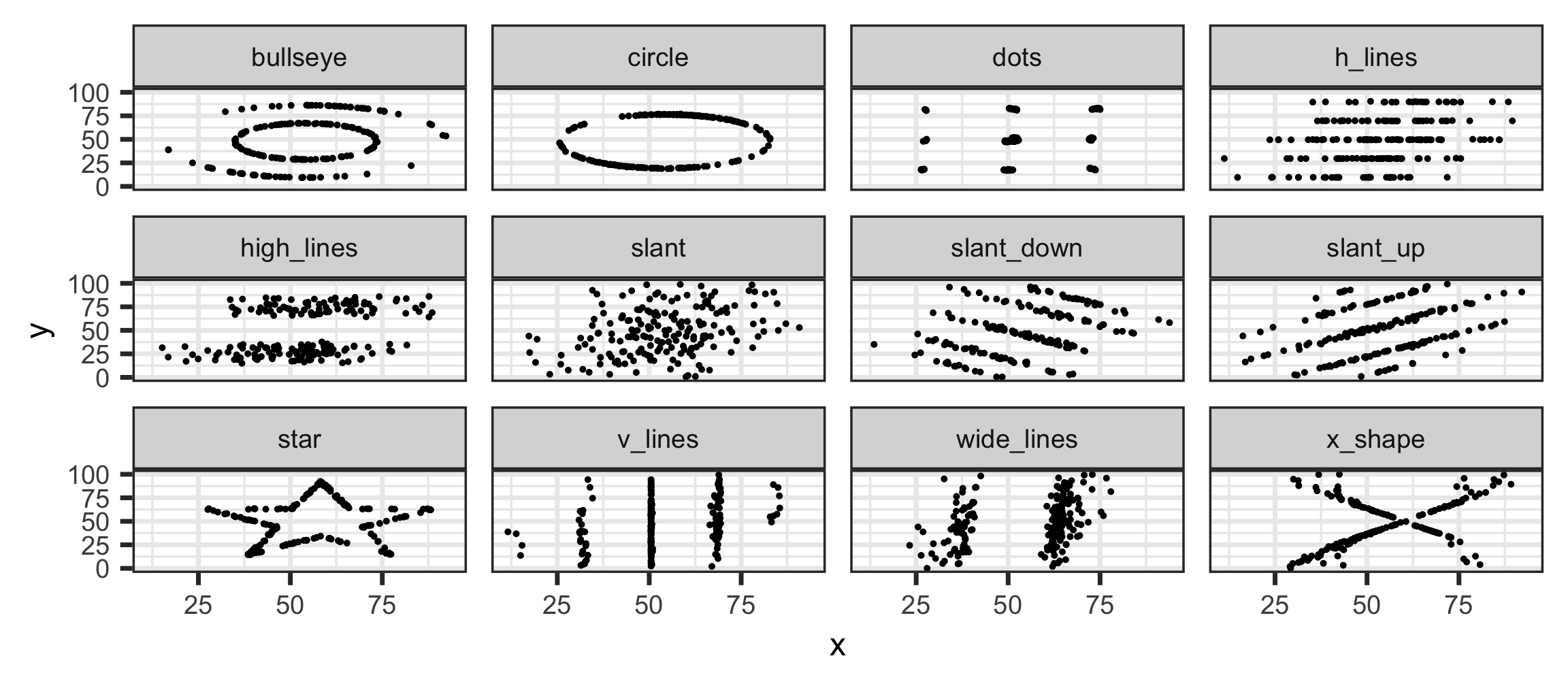
Uncovering Simpson’s paradox

Advantages of visualisation
- Ability to “see” large amounts of data
- Reveals properties or structures in data that are not apparent in numerical summaries
- Facilitates understanding of both large-scale and small-scale features of the data
A model of visual information processing

Visual encodings
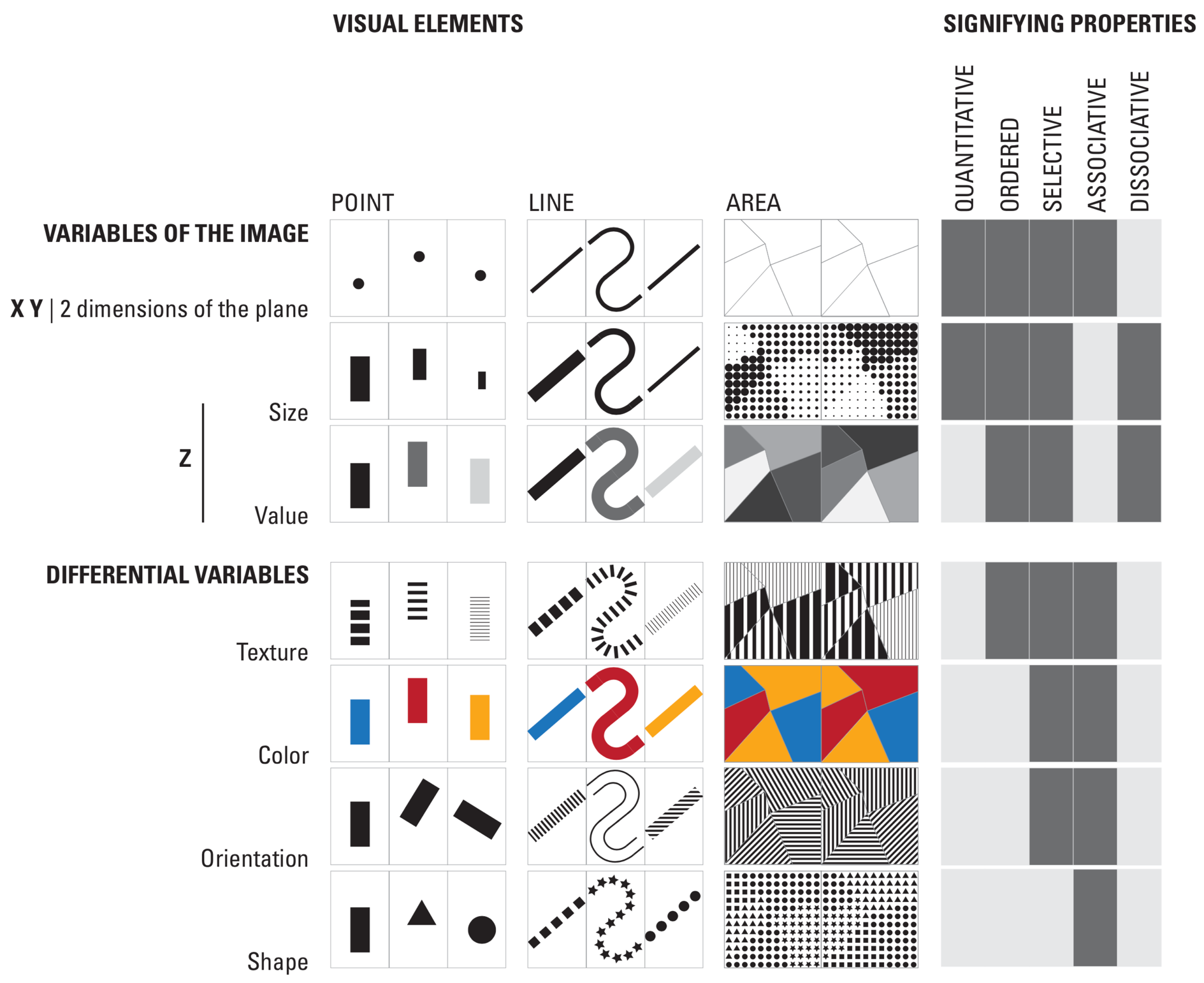
Effectiveness of visual encoding
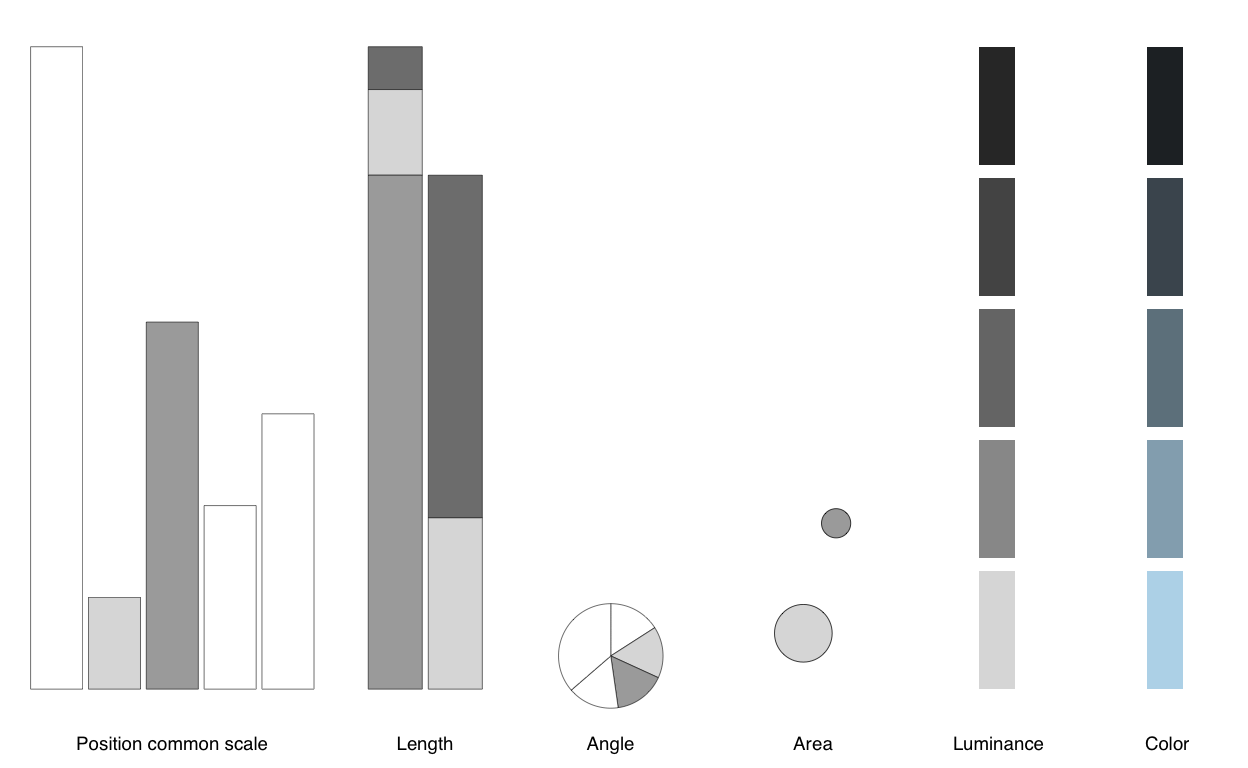
Effectiveness of visual encoding by data type
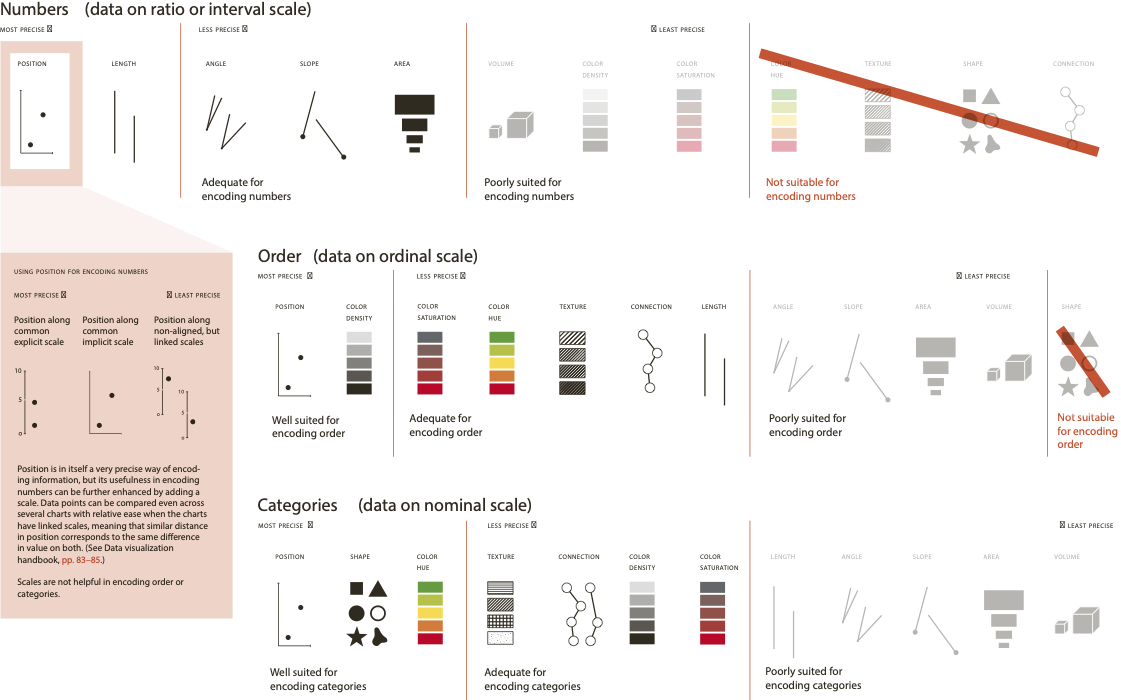
Affectiveness by color
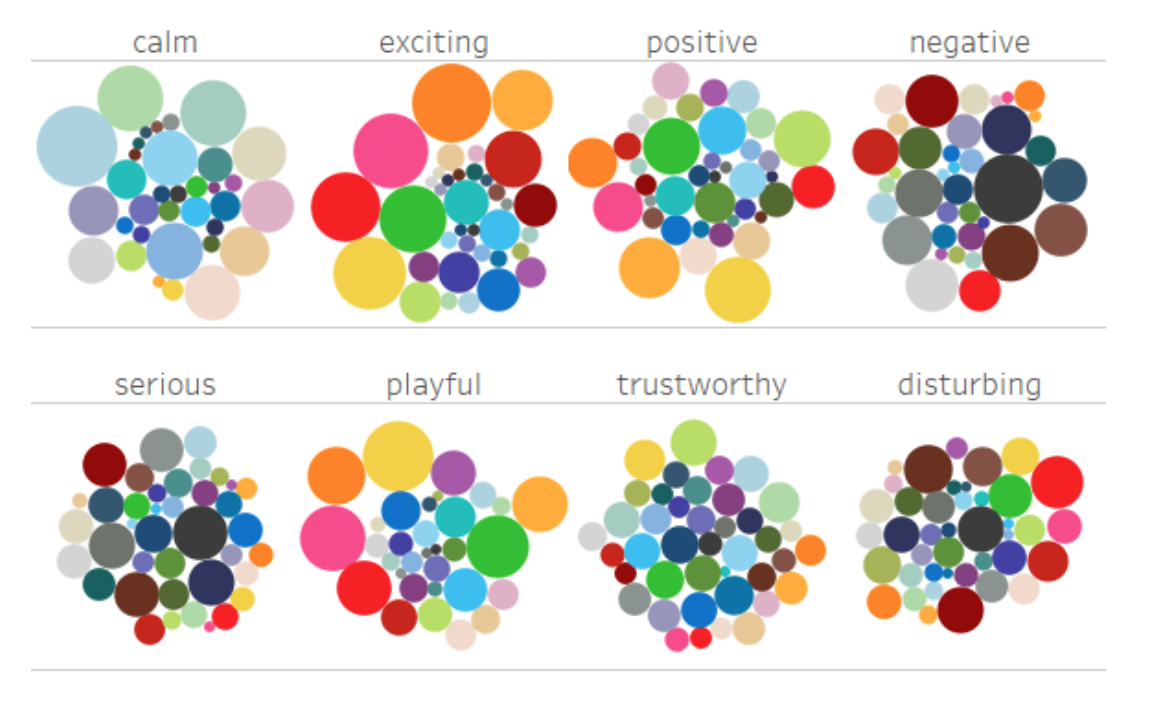
Case study
Daily maximum temperature in selected Australian locations
Data from the Bureau of Meteorology
Daily maximum temperature from beginning of 1910 to mid 2021 for 7 Australian location (Perth, Adelaide, Cairns, Brisbane, Sydney, Canberra, and Melbourne).
| date | max_temp | station |
|---|---|---|
| 1910-01-01 | 26.7 | Perth |
| 1910-01-02 | 27.0 | Perth |
| 1910-01-03 | 27.5 | Perth |
| 1910-01-04 | 24.0 | Perth |
| 1910-01-05 | 24.8 | Perth |
| 1910-01-06 | 24.4 | Perth |
Daily maximum temperature
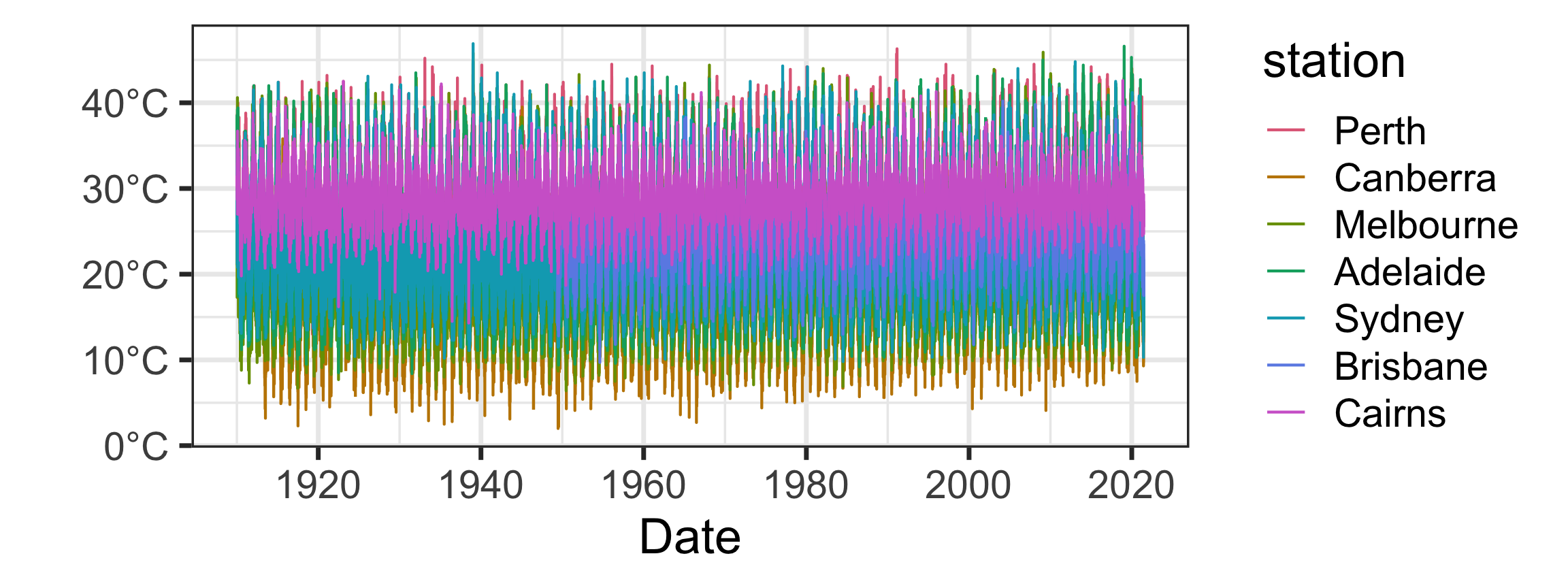
Very long time series… what’s the intended message?
Recent maximum temperature trend
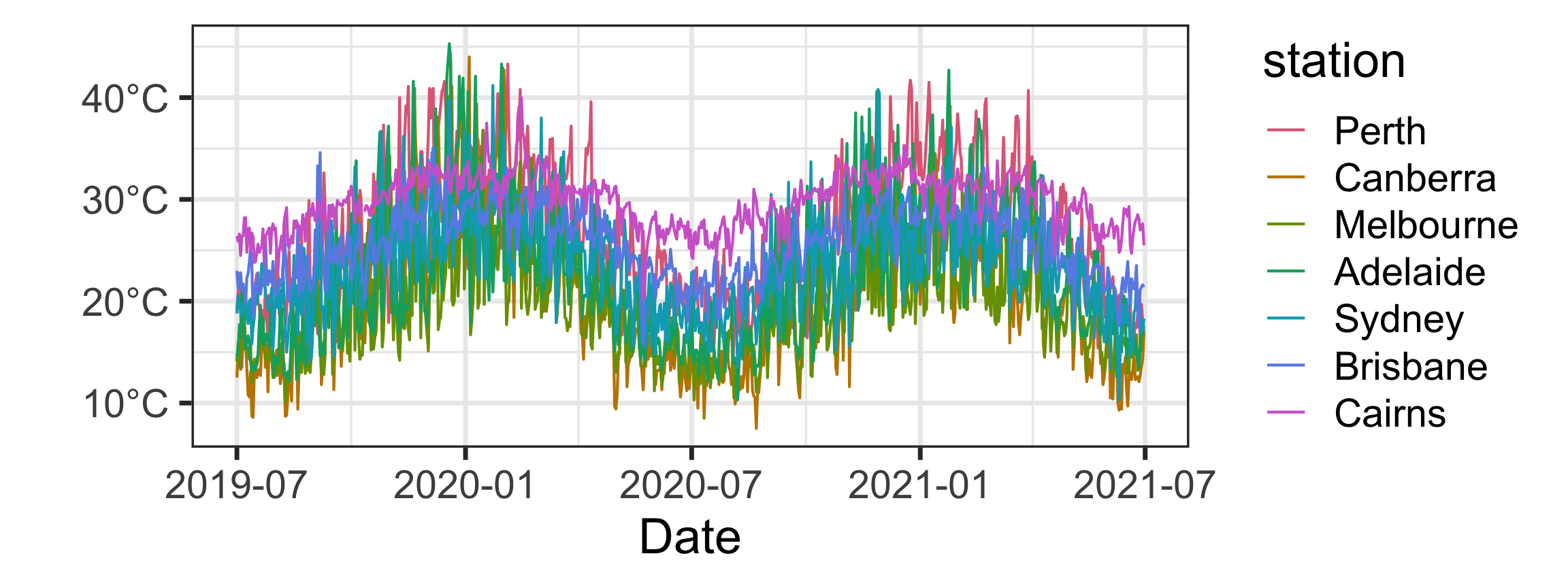
Lots of fluctuation in temperature… does it show the trend?
Recent maximum temperature trend
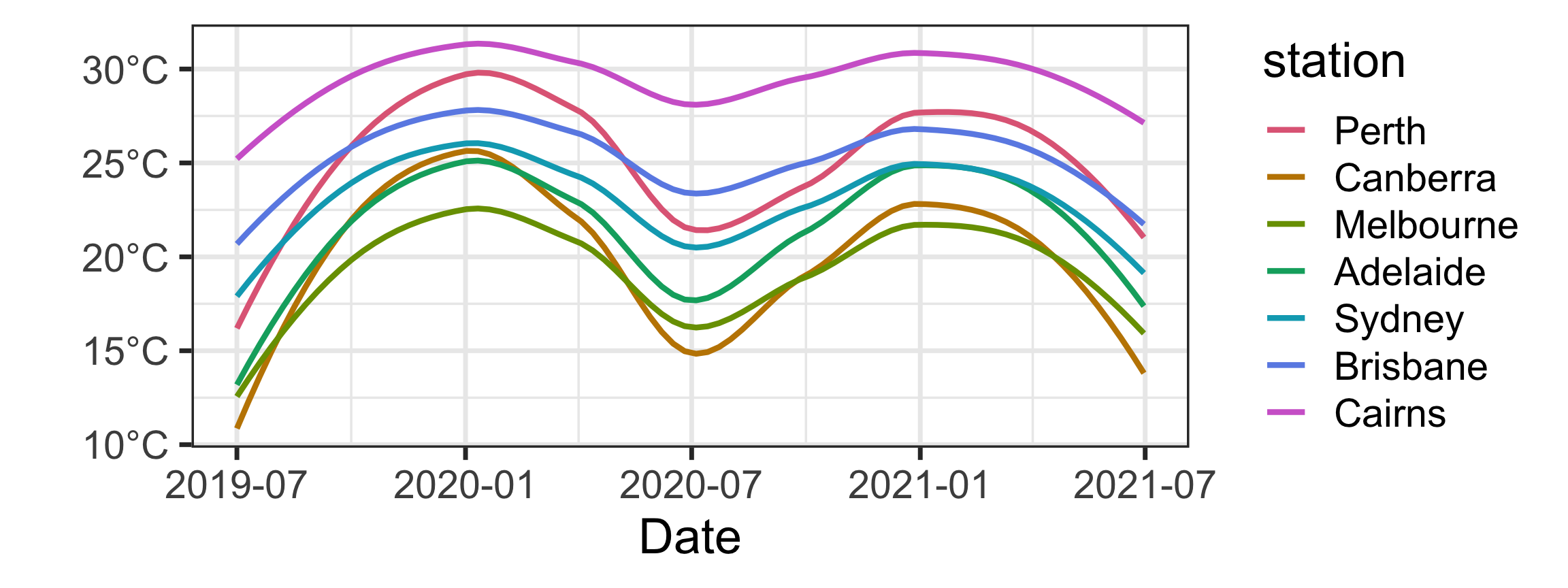
This is showing the fit from a GAM model… but we lost understanding the underlying variation in the original data
Recent maximum temperature trend
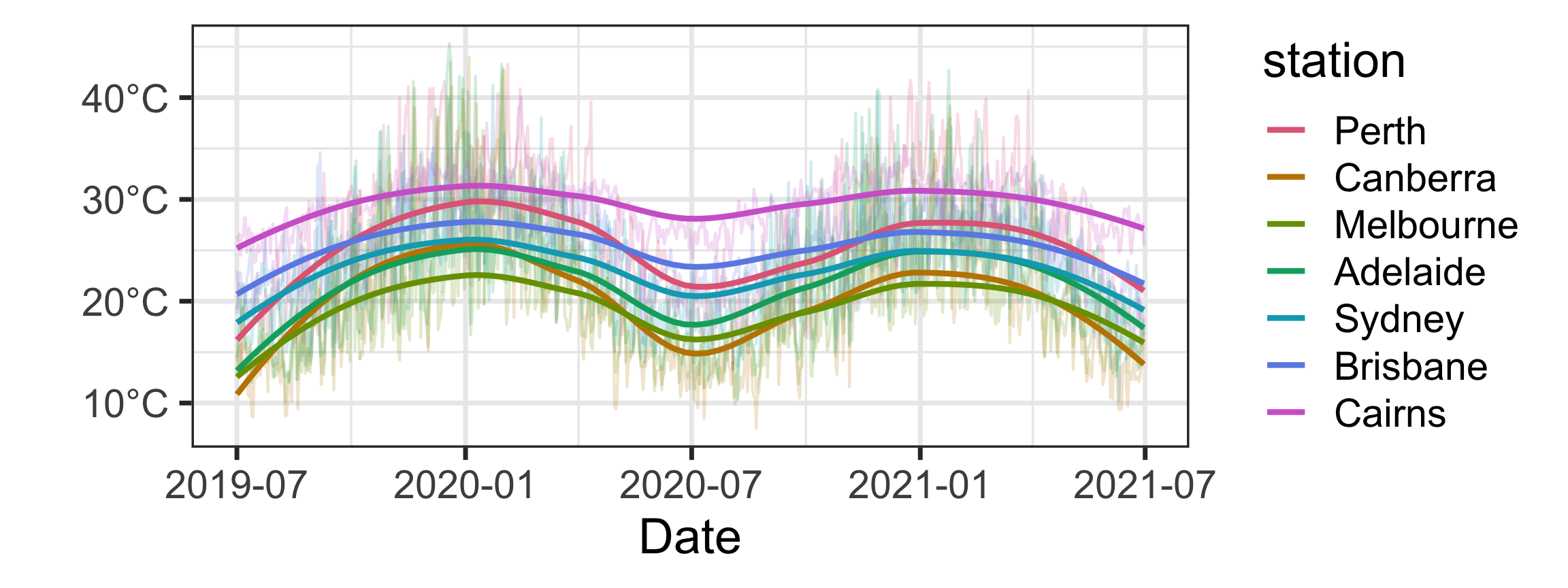
Some models don’t look like a good fit… let’s examine individually
Recent maximum temperature trend
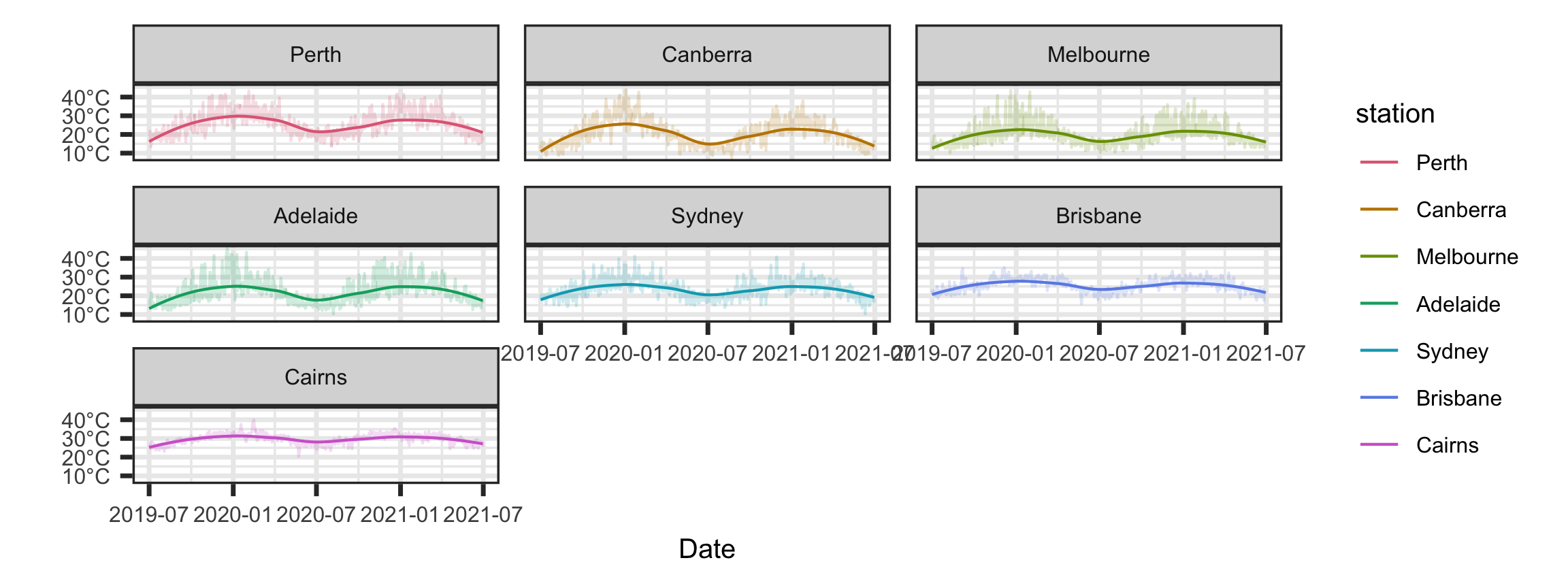
The legend is redundant here… remove unnessary elements.
Recent maximum temperature trend
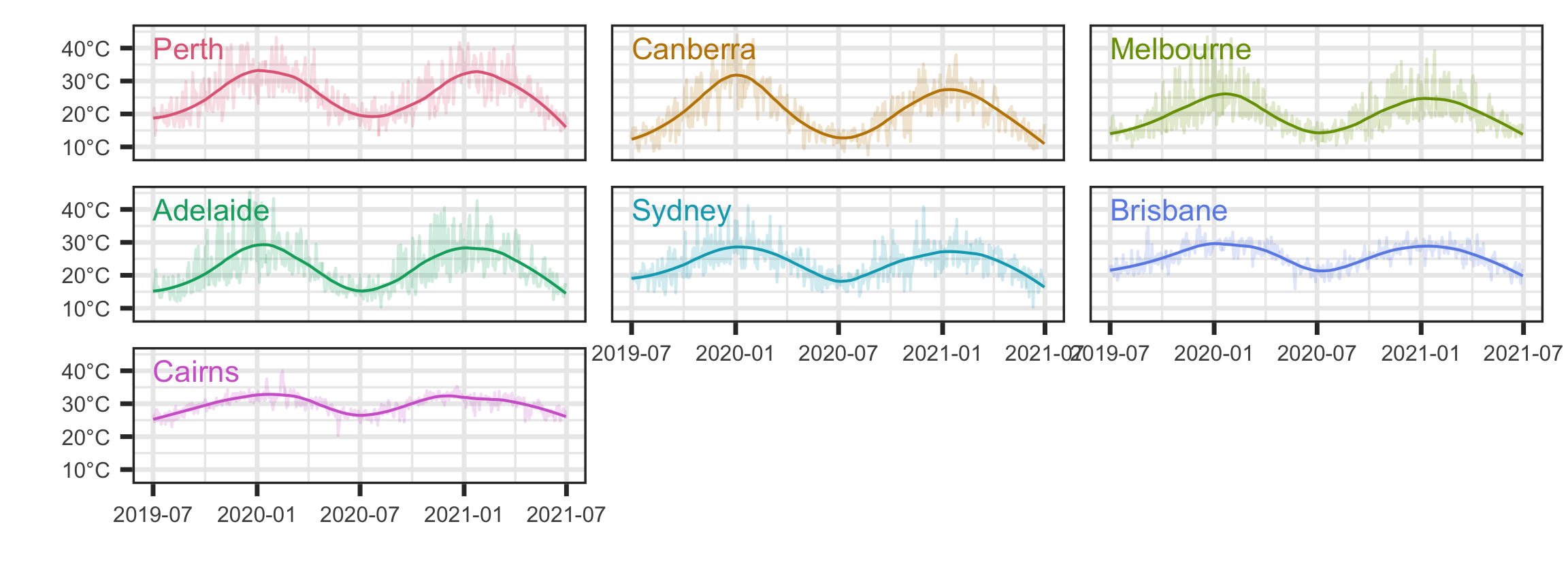
Using loess with span of 0.3 instead … comparison across location is harder when in data shown in different panels
Recent maximum temperature trend

Casting a shadow of the trend across locations in each panel makes it easier to compare the trend…
Recent maximum temperature trend
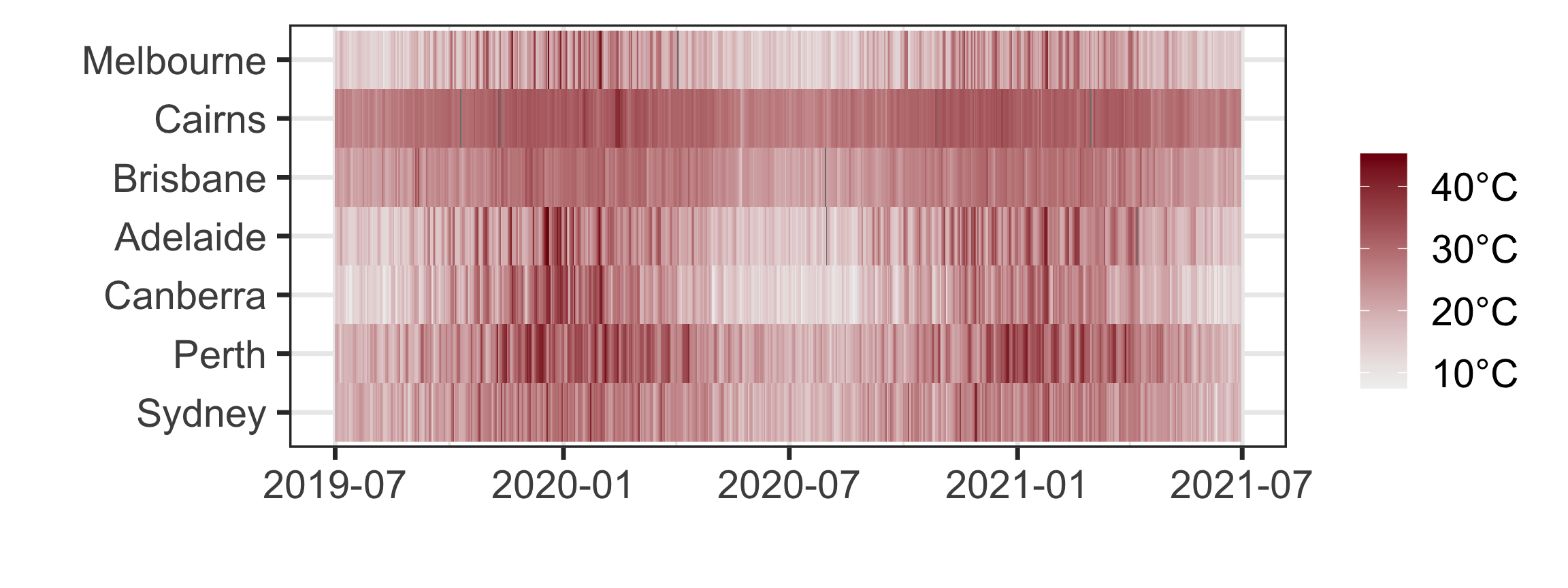
There were missing values in data that wasn’t apparent before!
Weekly average maximum temperature trend
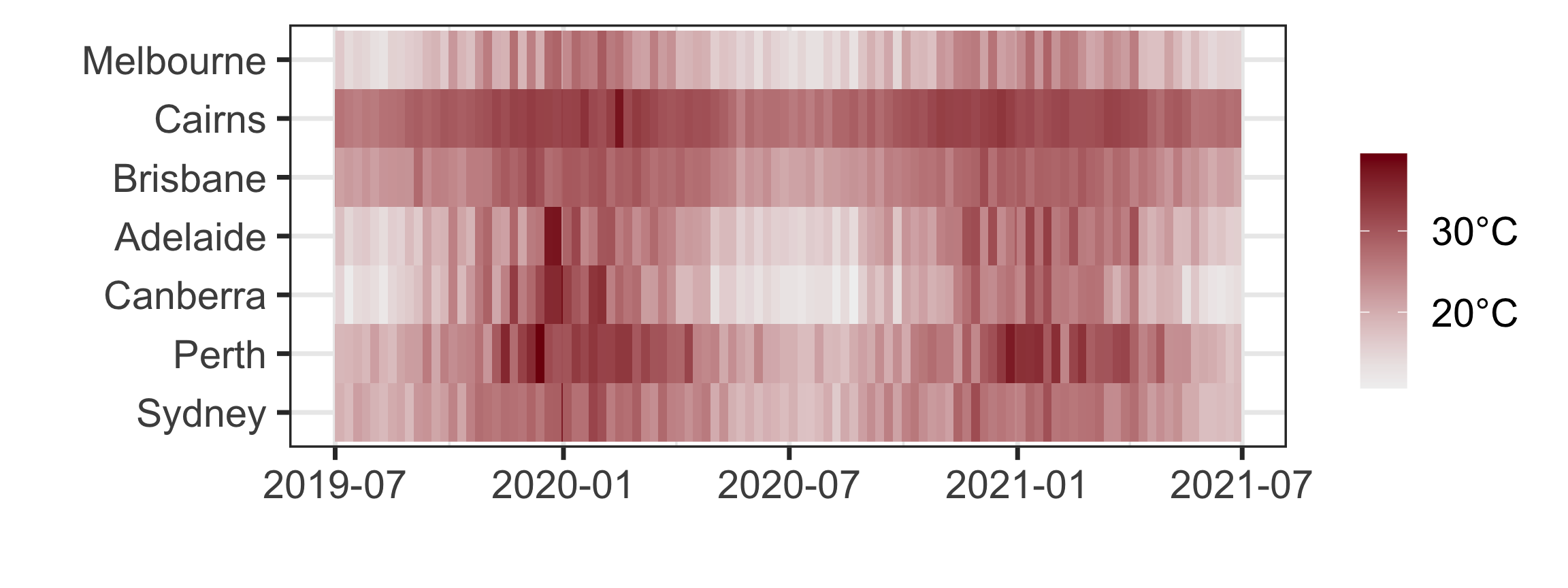
By taking weekly averages, the plot is smoother and you can focus on the main trend instead instead of getting distracted with daily fluctuations.
Maximum temperature trend by month
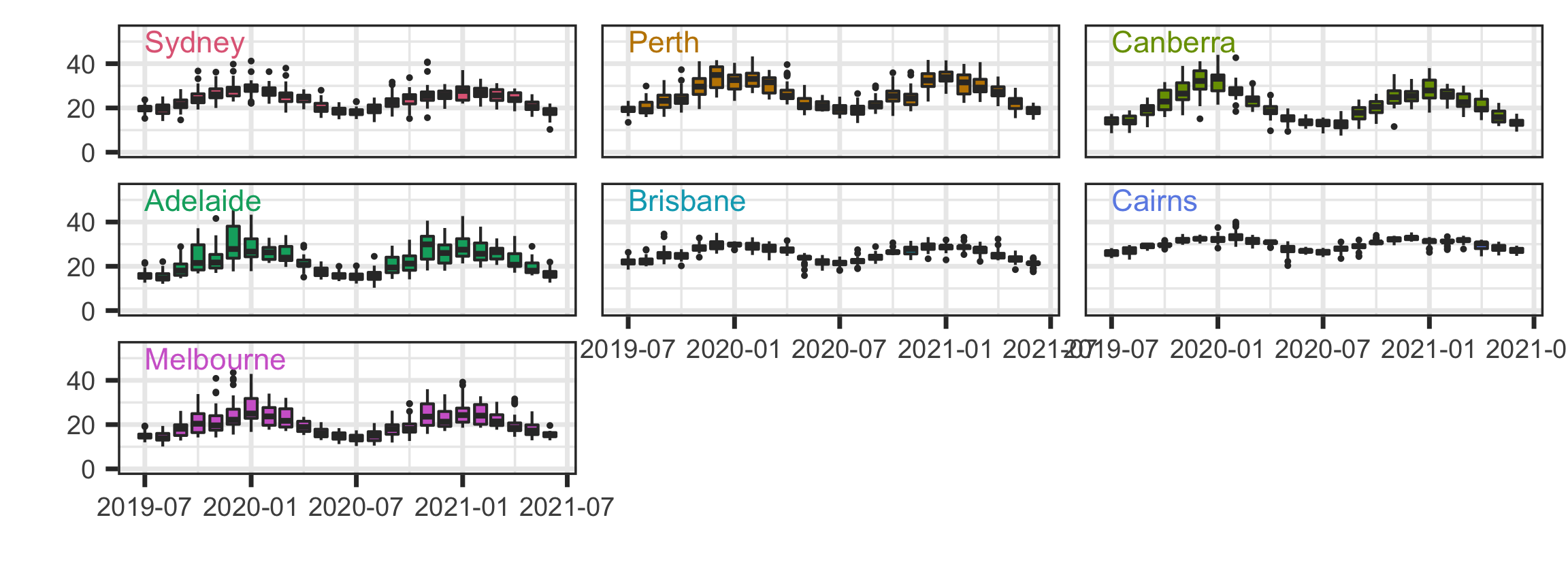
This plot is easier to see the overall trend and the monthly variation…
Can you think of other way to visualise the trend?
Visual design guidelines
- Design graphics so important data elements can be quickly perceived
- Graphical symbol systems should be standardised within and across applications
- Ensure sufficient distinction for clear discrimination of symbols – no need for maximal distinctness
- Use low-chroma colors to color large areas
- Do not use more than 10 colors if possible
Week 11 Lesson
Summary
- We revised the princples and practices of data visualisation
- We looked at different encoding choices based on the daily maximum temperature
Resources
- Spencer (2022, Feb. 17). Data in Wonderland. Section 2.
- Ware, Colin (2021) Information Visualisation: Perception for Design. 4th ed.

ETC5523 Week 11